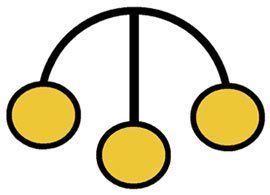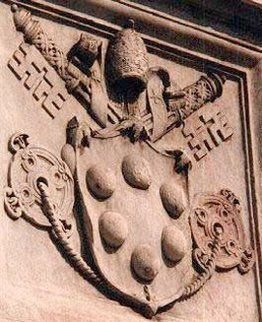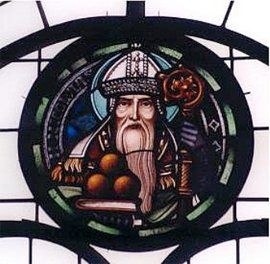HISTORY OF PAWNBROKING
As mankind’s oldest financial institution, pawnbroking carries on a tradition with a rich history. Often called the “the world’s second oldest profession,” pawnbroking can be traced back at least 3,000 years to ancient China, and has been found in the earliest written histories of Greek and Roman civilizations.
During the Middle Ages, certain usury laws imposed by the Church prohibited the charging of interest on loans, thus limiting pawnbroking to people who had religious beliefs outside of the Church. Out of economic necessity, and because of problems with the banking system, pawnshops made a resurgence in later years. The House of Lombard operated pawnshops throughout Europe. Legend contends that they even counted royalty, such as King Edward III of England, among their clientele during the 14th century. The symbol of the Lombards’ operations was the three gold balls that still remain the trademark.
Pawning has long been a source of capital for people in times of need, as well as a means of financing business ventures.

The symbol of the three balls was part of the coat of arms of the Medici family.
Historical Facts And Legends
The nursery rhyme "Pop Goes The Weasel" refers to pawning. A weasel is a shoemaker’s tool and to "pop" is to pawn. "That’s the way the money goes...Pop goes the weasel."
Queen Isabella of Spain pawned the crown jewels to finance Columbus’ voyage to America. The word pawn originates from the Latin word "patinum" which means cloth or clothing. The French word "pan" refers to a skirt or blouse. In the early centuries, the principle assets people had were their clothes and borrowed money by pawning their clothing.
The universal symbol of pawnbroking is three gold balls and is one of the most recognized in the world. The Medici families in Italy along with the Lombards in England were moneylenders in Europe. Lengend has it that one of the Medicis in the employ of Emperor Charles the Great fought a giant and slew him with three sacks of rocks. The three balls or globes later became part of their family crest, and ultimately, the sign of pawnbroking.
Throughout history, pawnbrokers have been helping people. The Bible offers references to pawnbroking, and in Deuteronomy 24:6-13 it states: "No man shall take the nether or the upper millstone to pledge, for he taketh a man’s life to pledge." What this means is: you should not take as a pledge anything a man needs to make a living. The same chapter also says: "Thou shalt not go into his house to fetch the pledge. Thou shalt stand abroad and the man to whom thou dost lend shall bring the pledge...unto thee." Interestingly, often the debtor’s children could be used as a pledge (2 Kings, 4:1-7). Also in Deuteronomy 23:21 the people were told not to take interest from their own countrymen – only from foreigners.
According to ancient Mesopotamian law, the rates of interest charged – even in those days – were 20% for silver, and 33% for grain.
The moneychangers of Jesus’ time served two purposes. First they exchanged Antiochian Tetradrachms for the local currency (shekels), exacting a fee between 4% and 8% for their services. Second, they functioned as bankers and lenders. In the well-known Gospel story, Jesus overturned their tables because he didn’t feel the gates of the Temple were the right place to be conducting that business. In fact, such moneychangers set up shop there as a service, to deal with people who came to pay their half-shekel Temple tax. The Rabbis insisted it be paid in silver didrachms of Tyre, which nobody carried.

The Medici Coat of Arms - The three sphere symbol is attributed to the Medici Family of Florence, Italy, owing to its symbolic meaning of Lombard. This refers to the Italian province of Lombardy, where pawn shop banking originated under the name of Lombard banking.
Other Legends Of The Origin Of The Pawnbroker Symbol
More on the Medici family – The symbol of the three balls was part of the coat of arms of the Medici family, who established the Medici trading and banking empire in Florence, Italy. The Medicis were a 15th century Italian family of bankers and lenders, with considerable fame and fortune. They became so well known in the finance and lending profession that the other lenders, wanting to share in their success, adopted similar coats of arms, signs, shields and symbols, with three golden balls being the most popular. Once other merchants involved in monetary dealings adopted the three golden balls as their symbol, the three balls came to symbolize the entire profession founded on the ethic of mutual trust.
Throughout the Middle ages you can find many coats of arms bearing three balls, orbs, plates discs, coins and more as symbolic of monetary success.
When Italian bankers began to open branches abroad, the symbol of the three golden balls spread to the European west. It is known that there was pawnbroking in Spain because Queen Isabella pawned some of her royal jewels to finance Columbus’ long voyage to the New World. I wonder if the pawnbroker who made that loan knew just want he was starting?
The symbol of the three golden balls was brought to North America from England, where pawnbrokers still display the symbol to this day.
Saint Nicholas – The Patron Saint Of Pawnbrokers
Through his great acts of kindness and generosity, Saint Nicholas became the patron saint of many; of seafaring men, of marriageable young women, of the falsely accused, of endangered travelers, of farmers, of children (of course), of merchants, and of pawnbrokers. Pawnbrokers and bankers in northern Italy, who would look to Saint Nicholas as their patron saint, would hang three golden balls above the doors of their shops in tribute to, and for good luck from, their Saint Nicholas.

Pawnbrokers and bankers in northern Italy, who would look to Saint Nicholas as their patron saint, would hang three golden balls above the doors of their shops in tribute to, and for good luck from, their Saint Nicholas.
